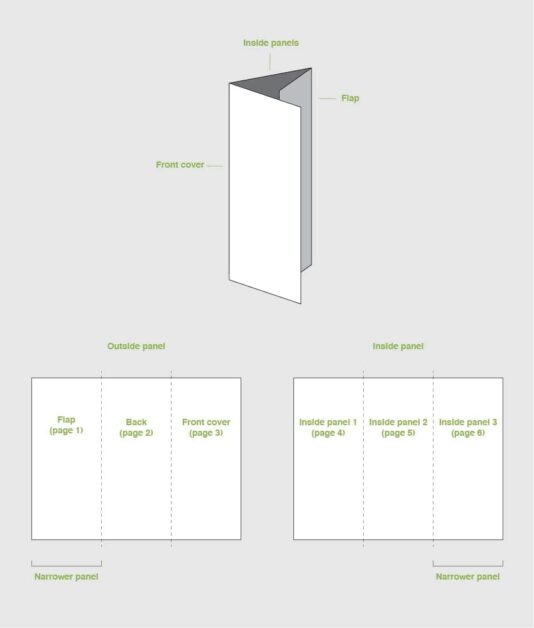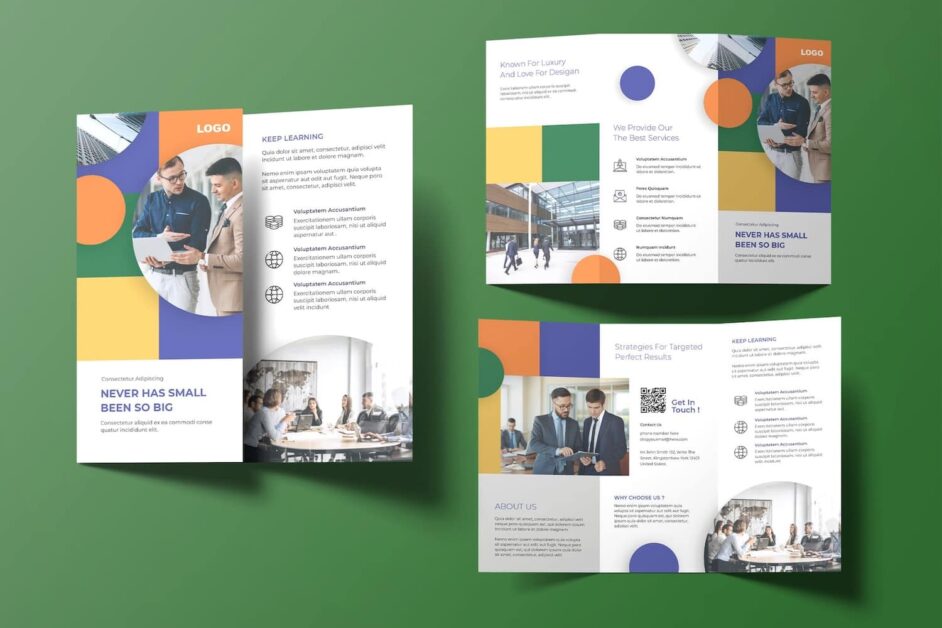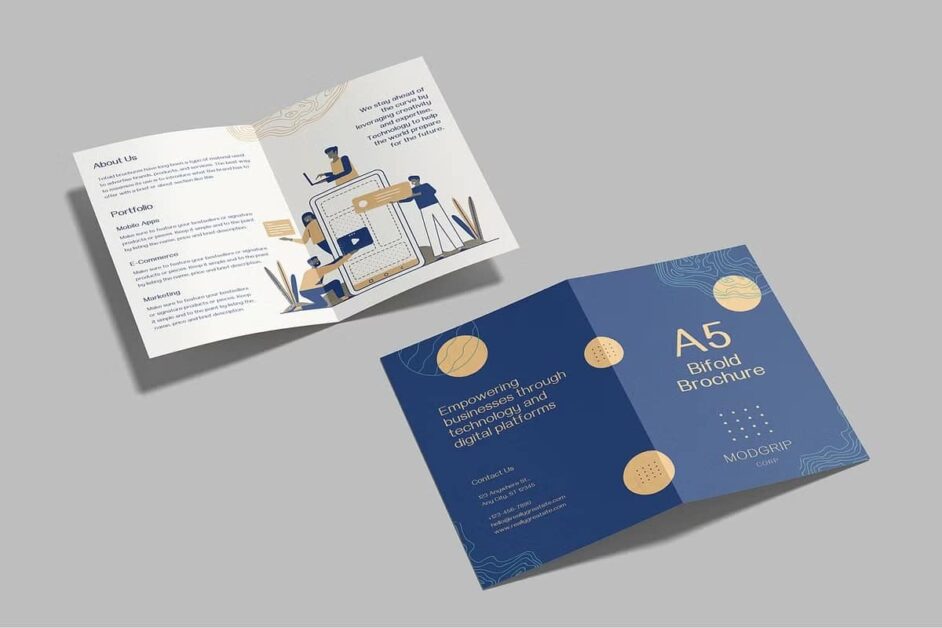Brochure Structures for NDIS Service Providers: Simple, Moderate & Detailed
Last updated on April 3, 2025
As an NDIS service provider, the way you present your services can significantly shape how participants, families, and referral partners perceive your organisation. A brochure is more than just a piece of paper — it’s a communication tool that builds trust, explains your services, and makes your onboarding process easier.
Different participants have different needs. Some may want just a quick overview, while others may need detailed step-by-step information before they make a decision. That’s why offering brochures in three formats — Simple, Moderate, and Detailed — helps ensure you’re ready for every kind of audience.
Let’s explore each format with examples, layout ideas, and best practices.
Why Brochures Matter in the NDIS World
NDIS participants often navigate a complex system. They’re seeking clarity, reassurance, and providers they can trust. Brochures give you the opportunity to speak directly to them in a visual and engaging way.
Well-designed brochures help:
- Simplify service explanations
- Support culturally and linguistically diverse participants
- Offer visual storytelling for those with limited literacy
- Reinforce your brand and values
Let’s dive into how you can create effective brochures at three levels of detail.
1. Simple Brochure (Trifold or One-Page Flyer)
This version is ideal for quick handouts at events, community visits, clinics, or as a social media downloadable.

Suggested Sections:
Cover Panel
- Logo and tagline
- A warm, inclusive photo
- A simple message like “Supporting You Through Every Step of Your NDIS Journey”
Who We Are
- A short introduction (2–3 sentences)
- Emphasize values like choice, inclusion, and care
Our Services
- A bulleted list or icons showing your key offerings:
- Core Supports
- Capacity Building
- Support Coordination
- In-home care
- Community access
Why Choose Us
- 3 to 4 bullet points on what makes your service special
- NDIS registered provider
- Friendly and qualified team
- Multilingual support
- Flexible and reliable
Contact Information
- Phone number, email, website
- QR code to your referral or intake form
- Social media links
This brochure is best printed on glossy A4 paper and folded into thirds. Keep language simple and avoid jargon.

2. Moderate Brochure (Bi-fold or 4-Page Booklet)
This version gives a more structured view of your services and is ideal for first consultations, home visits, or email follow-ups from referrals.
Page 1: Cover
- Business name and logo
- Hero image with your tagline
- A brief summary or mission statement
- QR code linking to intake or contact page
Page 2: About Our Organisation
- A paragraph about your history and who you serve
- List of core values
- Mention service locations and any cultural or disability-specific expertise
- Testimonials or accreditation badges (if available)
Page 3: Our Services
Break your services into three key categories:
Core Supports
- Daily personal care
- Community outings
- Meal prep, cleaning, and basic living support
Capacity Building
- Skill development
- Therapy services
- Social inclusion programs
Support Coordination
- NDIS plan implementation
- Crisis support
- Linking to providers
Use short paragraphs with icons or illustrations next to each service type.
Page 4: How to Get Started
• A step-by-step guide:
1. Reach out
2. Meet and discuss your goals
3. Choose services
4. Begin support
Include basic eligibility information, documents needed, and your full contact details.
This format works well as a handout in folders, onboarding kits, or email PDFs.

3. Detailed Brochure (6 to 10+ Page Booklet or PDF)
This is a complete introduction to your service, ideal for onboarding, downloadable info packs, and working with hospitals or support coordinators.
Page 1: Cover
- Large photo or branded image
- Business name and tagline
- Your logo, contact info, and a QR code to apply or refer
Page 2: Our Story
- How your business started and why you care
- Mission and long-term vision
- A message from the founder or team leader (optional)
Page 3: Our Approach
- What “person-centred care” means in your service
- How you promote independence, safety, and inclusion
- Your policies around choice, dignity, and feedback
Pages 4 to 6: Detailed Service Overview
Break into three clear parts:
Core Supports
- Personal care and hygiene
- Community participation
- Transportation and errands
Capacity Building
- Life skills and employment
- Therapy: speech, OT, physio
- Communication and decision-making support
Support Coordination
- Navigating NDIS plans
- Emergency support planning
- Building support networks
Include small real-life examples or testimonials where appropriate.
Page 7: Meet the Team
- Introduce key staff
- Include qualifications, language skills, and quotes
- If possible, add photos of real team members
Page 8: How We Onboard You
- Visual steps (contact > planning > start)
- Forms required and what to expect in your first meeting
- Your role in the planning process
Page 9: Success Stories / Testimonials
- 2 to 3 real stories of participants whose lives improved through your services
- Optional: Add video testimonial QR codes
Page 10: Frequently Asked Questions
- What does NDIS funding cover?
- Can I change providers?
- Do I need to have a plan ready?
- How quickly can I start?
Page 11: Contact Us
- All contact options (email, phone, WhatsApp if used)
- Social media
- QR code to referral form
- Office address (if applicable)
This type of brochure is ideal for detailed print and downloadable PDFs from your website. It also serves as an onboarding welcome pack.

Tips for All Brochure Types
- Use clear, readable fonts (minimum size: 14pt)
- Avoid jargon or explain terms like “SC = Support Coordination”
- Keep text in small paragraphs with headings
- Always include a clear call-to-action
- Offer brochures in multiple languages if needed
- Add real client photos (with permission) instead of stock images
- Include QR codes to simplify next steps
Final Thoughts
Creating brochures at different levels allows you to serve different audiences more effectively. A simple one-pager might help someone at an event remember your name, while a detailed onboarding guide helps participants feel confident and supported.
NDIS pdf brochure sample
Can't find the answer to a question?
Get in touch with our support team.